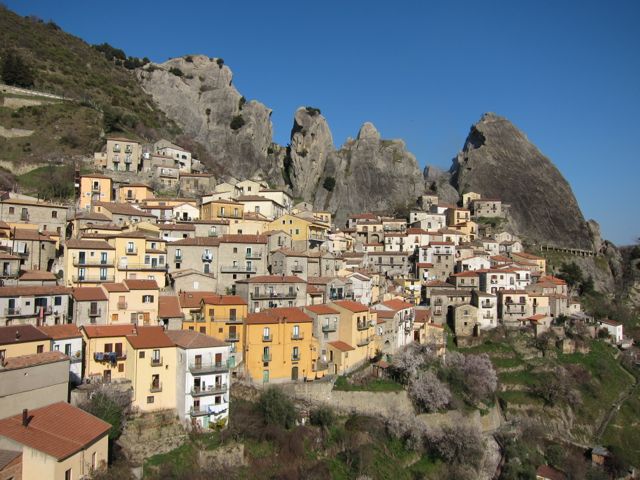
When I was invited to visit Francis Ford Coppola’s new hotel, Palazzo Margherita, in Basilicata I said yes real fast. A no-brainer, right? Of course the main reason was the chance to be one of the first to stay at what is one of the most exciting new hotel openings of the year (and see my write up of it in this month’s Travel & Leisure ‘It List’).
But the other big draw was the chance to revisit Basilicata. Although I’d been to Matera quite a few times (for various articles as well as while I was working on Restoring a House in Italy) I hadn’t really been to the countryside since we filmed for Gourmet’s Diary of a Foodie.
While filming there we were on a ridiculously tight schedule, which meant we arrived at 1am – stayed for a full day of shooting – them left late that evening. So most of my driving around Basilicata’s back roads was done in the dark of night.
All of which left me totally unprepared for the incredibly dramatic and gorgeous landscape as we made our way to Palazzo Margherita.
Leaving from Rome we decided to stop along the way for lunch. As always in such cases I pulled out my beloved Osterie d’Italia guide. I can’t ever stress enough how great this guide is. More than any other book I own, this is my trusted bible when it comes to finding a place to eat in the middle of nowhere.
After a quick check on the map of Basilicata I chose Il Becco della Civetta. It had just about every Slow Food symbol known to man (wine, cheese and local products) and was located just 15 minutes off our route.
Since that was the extent of my research I had no idea we were headed into one of the most beautiful towns in Italy. Or should I say One Of The Most Beautiful Towns In Italy. Because you see there is actually a listing of I Borgi piu Belli d’Italia, and Castelmezzano is on it.
This isolated town hangs on for dear life to the edge of deep ravine. It’s actually built into the living rock, with stairways, alleys and tunnels taking the place of normal streets.
Il Becco della Civetta is perched along the edge of the town. The cantina-like, stone walled original restaurant was recently expanded and we were seated in the new and modern looking dining room (yes, it was just waiting for a wedding to happen). But the views out over the ravine, towards the Dolomite-like rock formations made up for any shiny marble decorations.
So did the food.
We ordered way too much, but that was because we were trying to fit in as many local specialties as possible. (all in the name of research, right?)
We started out with Baccala Three Ways: A deep fried croquette of baccala and peperoni cruschi atop a puree of zucchini and more pepperoni; stewed baccala with pepperoni crushi; baccala and eggplant.
Pepperoni cruschi you are asking? These are a local specialty, from Senise, a type of red pepper with an intensely flavorful flesh, but a very thin skin. They are typically dried at the end of the summer, and then used all year round. Sometimes they are stewed, but often the dried peppers are deep fried, so that they become the most delicious pepper chips you can imagine. These chips are eaten as is, or else crumbled atop other dishes. The dried peppers are also ground to make a type of paprika that costs about as much as gold, but is much harder to find.
Lucania (this area of Basilicata) is famous for their cured meats, so that came next. Is this the prettiest plating of cured meats you ever saw? I love the pancetta tied into a bow. The plate included local caciocavallo, a frittata made with wild greens, pepperoni cruschi and several types of local spicy sausage.
One of the things I love about cooking in Basilicata is that the line between pasta and soups is often blurred. Sauces are often so much about vegetables that the pasta actually ends up playing a supporting role. Such was the cavatellini con verdure di campo e sbriciolata di salsiccia su purea di fagioli: Cavatellini with wild greens and sausage bits on top of pureed beans. Each of the elements of the dish remained distinct, so that we spooned a bit of each to blend the flavors ourselves. It wasn’t quite a soup, nor a pasta, but some delicious thing that was a bit of both.
The second pasta dish was more creativa: round ravioli made with Aglianico wine, then stuffed with sheep’s milk ricotta and wild mint. And even though it was a newish dish, no self respecting Lucanian recipe would be complete without a sprinkling of pepperoni cruschi and grated aged sheep’s milk ricotta.
For dessert we enjoyed two completely opposite ends of the culinary spectrum. First a rustic piece of fried dough, drizzled with local honey, a sweet usually served at weddings. Then the magnificent sheep’s milk ricotta mousse, which towered precariously atop a puddle of bitter orange sauce.
Although we probably could have used a nap at this point, we chose instead to wander around the town. Up and down, in and out: the steps, paved alleyways and tunnels lead us nowhere and back again, all with the backdrop of the ragged Dolomiti lucane against a impossibly blue sky.
Since it was off season the famous Volo dell’Angelo was out of commission. This is a zip line that runs from one scary peak of the ravine to the other.
Maybe we’ll have to come back during the summer, to have a ride.
Then again, maybe we’ll just stick to the eating and walking thing. It worked for me. 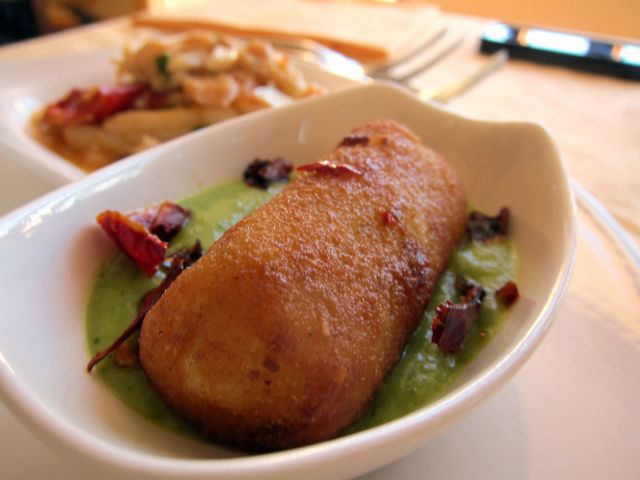
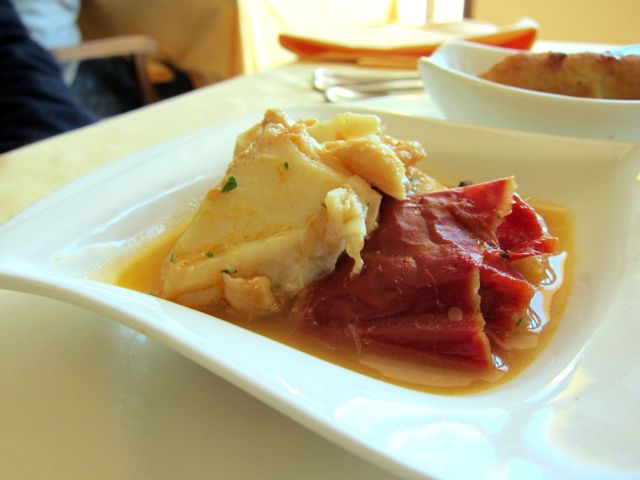
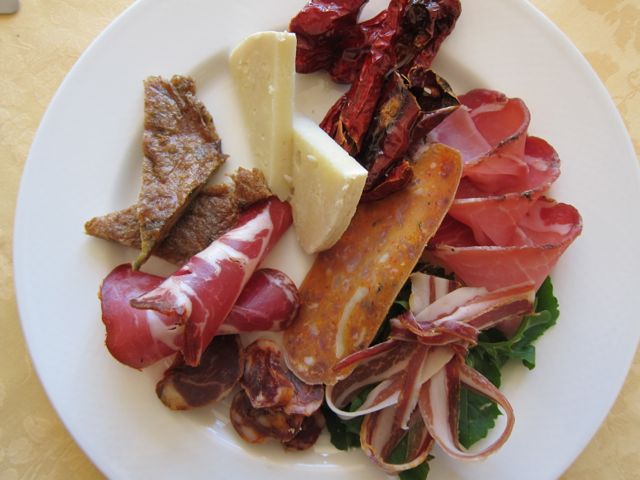
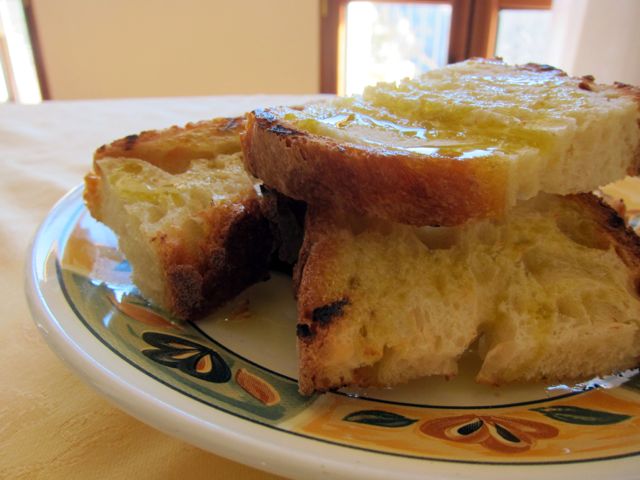
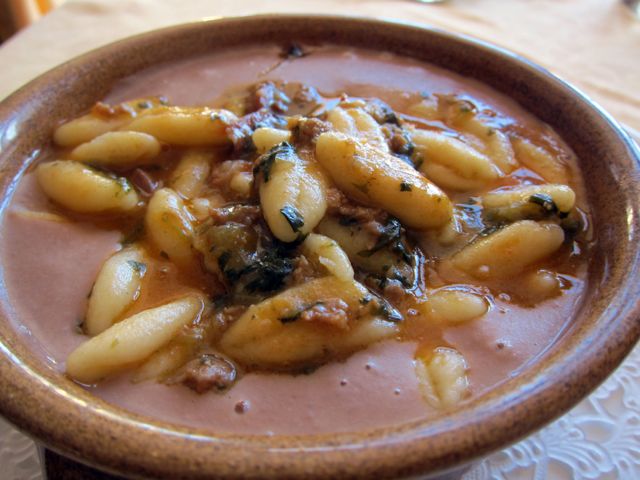
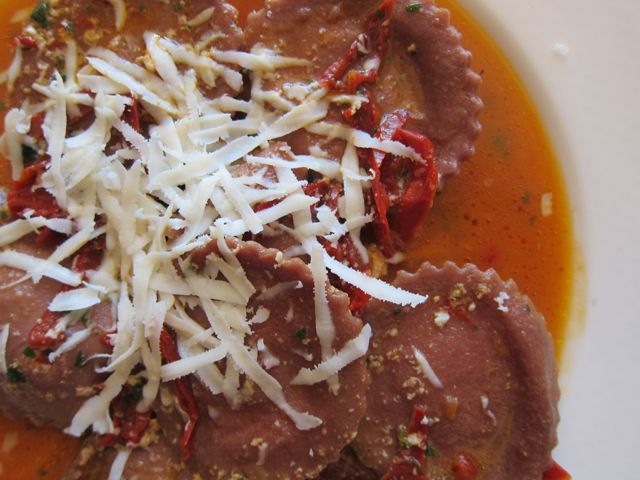
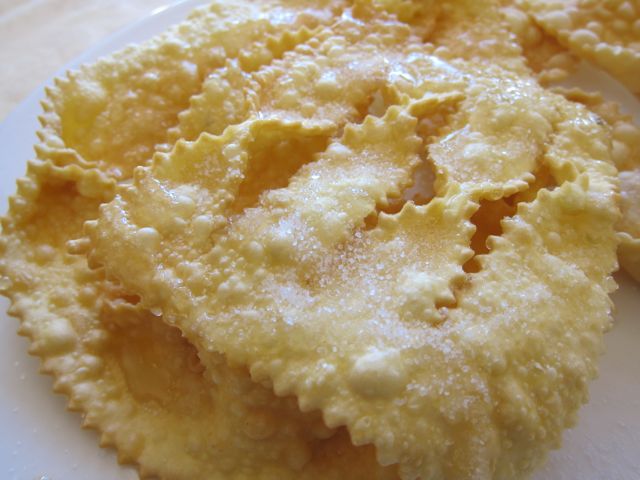
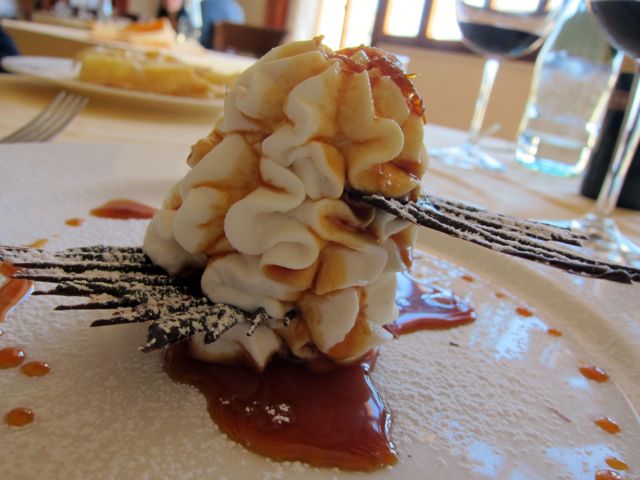
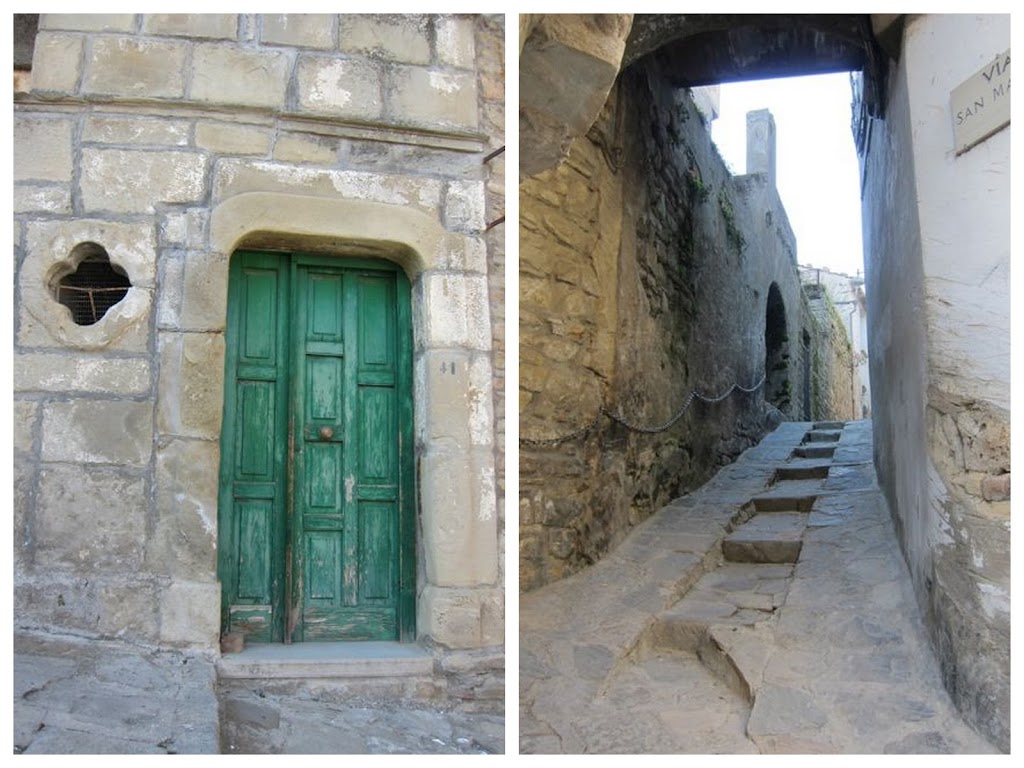
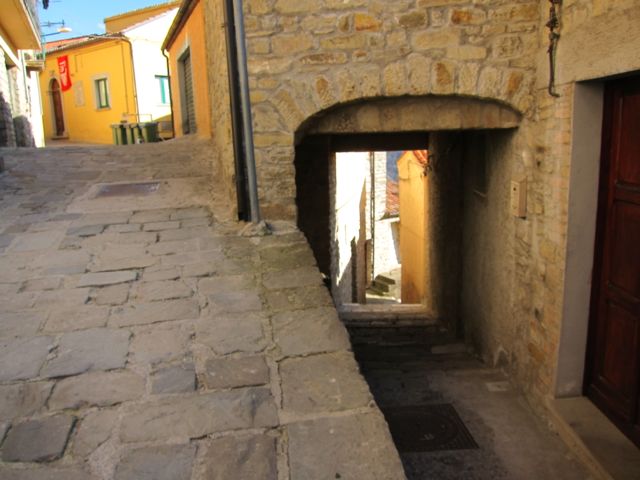
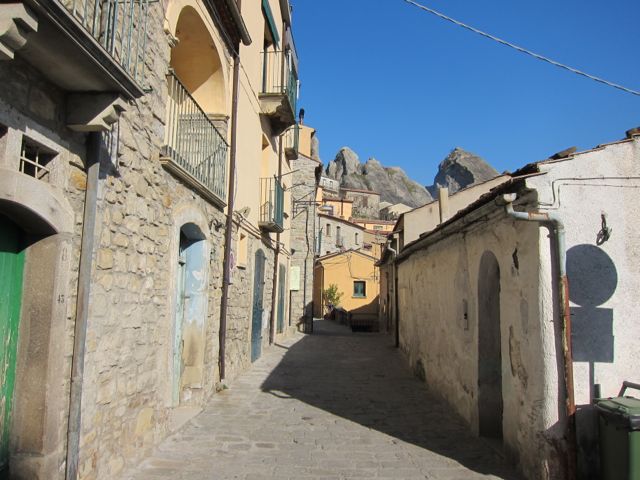
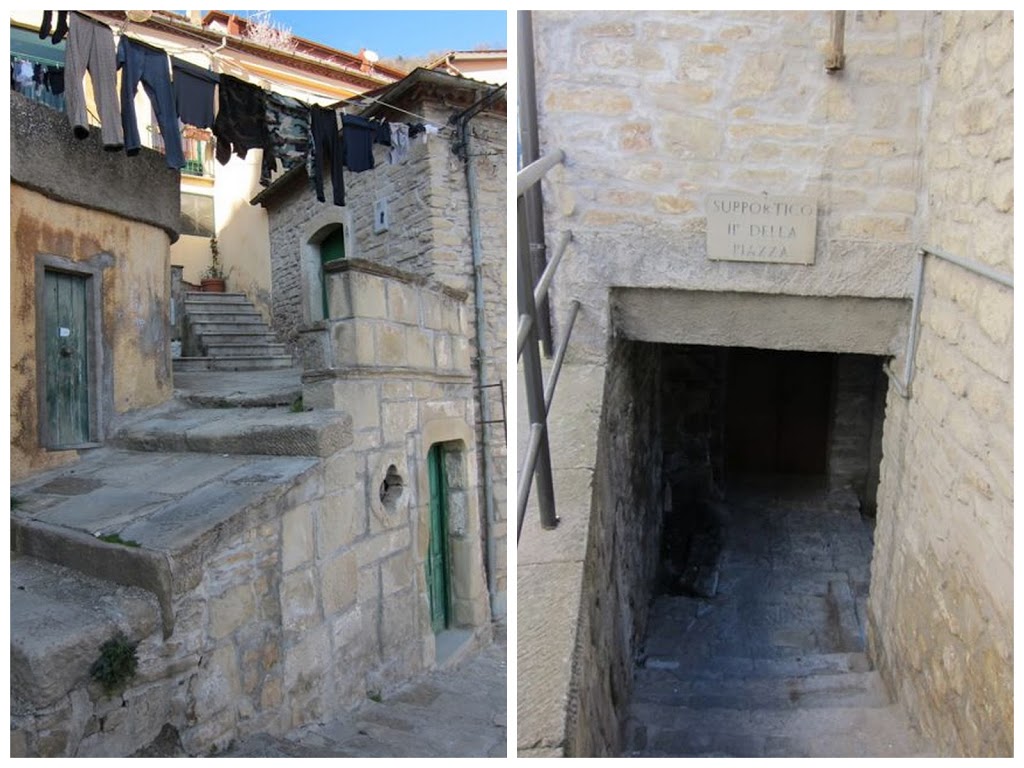
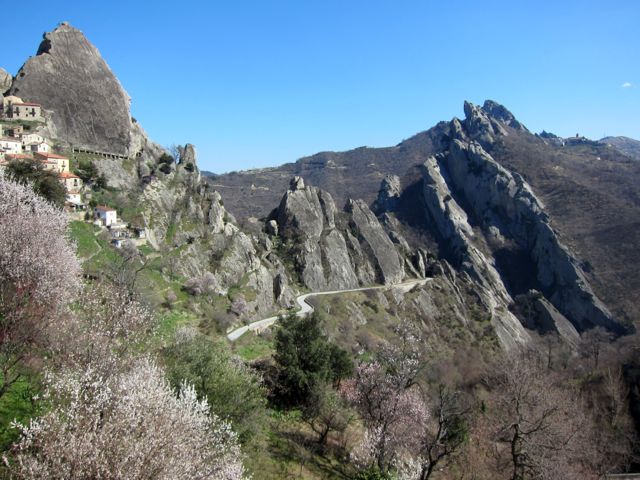
Il Becco della Civetta
Vico 1° Maglietta, 7 85010 Castelmezzano (PZ)
Tel. e Fax 0971 986249
Had I known you’d be traveling southward, I’d recommend stopping in Venosa, where Aglianico del Vulture is cultivated. I grew up in Venosa, and they still cook food with mostly local ingredients and traditions.
I have fond memories of all the dishes and ingredients you listed, especially the pepperoni cruschi.
Next time!
A close friend in San Francisco spent some time in Basilicata and is still raving about the pepperoni cruschi which he had with pasta. Brought the dried pepper string and and Italian pasta home and we made the attempt to re-create the dish. Perhaps not perfect but truly delicious!, Now I’m raving!
I am so glad Simeone could write such a nice article about Basilicata, land of many surprised, yet to’ be’ discovered.
As. a Tour Operator locate d in Venosa, birthplace of Horatious, the latin poet, was very difficult for me to’ explain what this Region was like….everyone knew Matera and Maratea, but it’s the small villages, up north that have the most interesting cultural and enogastronomic sites of Basilicata.
Here you can Find Norman Castles and Cathedrals, lakes, amazing rupestral churces, Jewish Catacoms, small hilltop villages with remarkable religious sites, all within few mille away. From one place to’ another…
Not the least, the Aglianico DOC wine and the local gastronomy can be’ tasted in our wineries or in our Country houses….during Passover, the medieval days in October, the Wine festival in September…
So come to’ Basilicata and you will have the best Southern Italy Tour!
yes I have Basillicata on my list of places to visit/explore! good to know about the small villages up and away from the busier areas..
Sherrie
Good!! If you need more info, please visit our website: http://www.basilicatatours.it
Ciao from Italy!
Wow, that looks amazing! Loved the piece in T&L, too. Lucky, lucky you.